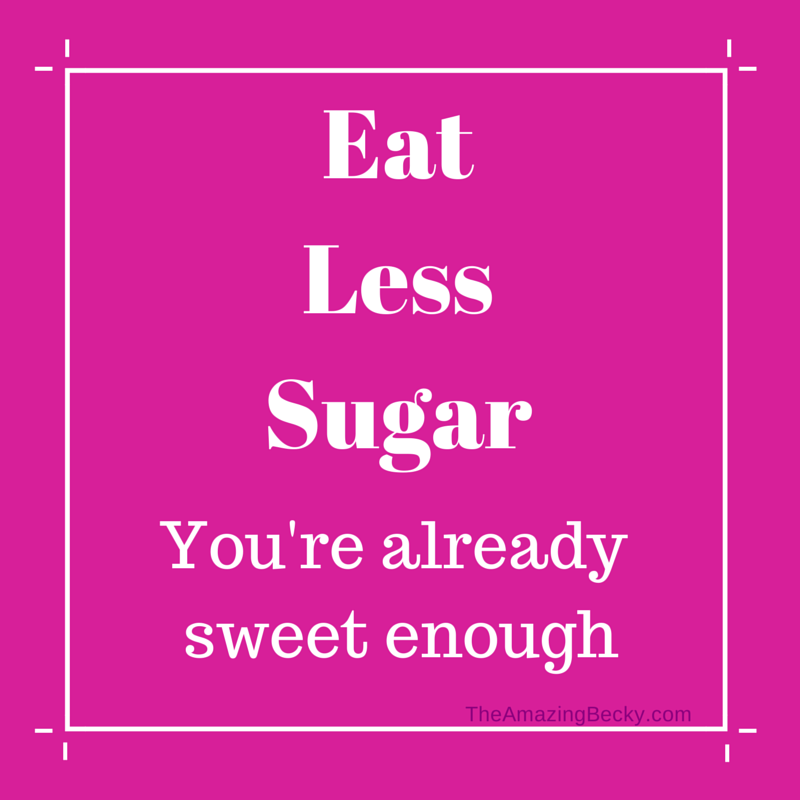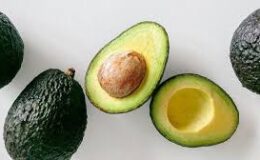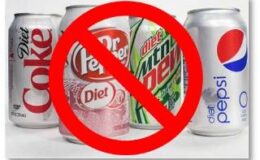
I hope this finds you well and enjoying some of the delicious flavors of the fall season. I love finding great recipes that use some of my favorites…apples, pumpkin, and butternut squash. Unfortunately, many of these seasonal treats, although tasty, can contain a lot of sugar.
I am sure it comes as no surprise to hear that eating sugar filled foods is one of the worst things you can do for your health and your weight. It leads to type II diabetes, heart disease, cancer, and many other chronic health problems. While sugar occurs naturally in foods like fruits, vegetables, whole grains, and dairy these are ok because our body slowly digests them and they supply a steady state of energy to our cells. Where we get in trouble is when we start to consume a lot of refined or “added sugar.”
Sugar is very addicting and can be very difficult to habit to break. I thought it might be helpful to share “8 Tips To Decrease Sugar.”
1. Avoid Sauces filled with Sugar- Ketchup, barbeque, and dressings are most likely common staples in your kitchen, but many are not aware of how much sugar is actually in these products. Some ketchup can contain 4 grams of sugar in 1 tablespoon. (and do you really eat just 1 Tbsp of ketchup?)
Try skipping the sauces and try adding:
-Fresh or dried herbs and spices- Bonus: Many have several health benefits
-Yellow mustard-Contains no sugar and barely any calories
-Pesto-Has a ton of flavor and contains healthy fats
-Mayonnaise- This can contain unhealthy oils and can be high in fat- give Avocado Oil Mayo a try. It’s a much healthier alternative.
-Vinegar- No sugar, no calories, but adds a lot of punch.
Be cautious of some balsamic vinegars..many can be high in sugar.
If you can’t ditch the ketchup or other sauces, try my favorite brand; Primal Kitchen which has little to no added sugar.
2. Eat Full-Fat Foods– We’ve been taught to believe that fat is bad, but that couldn’t be farther from the truth. Sugar is the enemy, not fat.
When we choose fat-free or low-fat products, we are actually choosing products that usually contain more sugar and sometimes more calories than those products with full-fat. For example, a low-fat yogurt can contain more than 16 grams of sugar, whereas a full-fat plain yogurt only has 5 grams of naturally occurring sugar..a big difference!!
Bottom line- choosing full-fat options (choose organic if buying dairy) is the way to go when trying to decrease sugar intake.
3. Eat Whole Foods- Whole Foods are those that have not be refined or processed and contain no additives or preservatives. Processed foods are the complete opposite; they contain added sugar, salt, unhealthy fats, and many additives you may have never heard of.
It’s been found that the ultra-processed foods we eat contain 90% of the added sugar in the average American’s diet compared to 8.7% that comes from foods we make from scratch.
Cooking from scratch is optimal but this doesn’t mean your meals need to be elaborate and time consuming. Adding spices, herbs, and healthy fats like olive oil to your protein or vegetables can add a lot of flavor and can be quite quick and easy.
4. Watch “Healthy” Processed Snack Foods- I’m sure you know the obvious foods that contain added sugar: candy, cookies, and cakes but what about those that are marketed as “healthy” or “all natural?”
Protein bars, granola bars, and dried fruits are definitely some of the biggest culprits. They can contain as much sugar as some candy bars.
Reach for these healthy snacks instead:
-A handful of nuts
-Beef or turkey sticks (make sure they contain no nitrates or MSG)
-Hard boiled eggs
-Fresh fruit
-Veggies dipped in hummus or guacamole
The safest option when it comes to snacking is to be prepared and take some low-sugar snacks with you when on the go.
5. Avoid Sugar-Filled Breakfast Foods– Cereals are the worst. Some contain half their weight in sugar. Granola typically has a ton of sugar. Sure, its tasty when added to yogurt but this starts your day out on a blood sugar roller coaster. Eating other popular breakfast foods such as muffins, pancakes, waffles, and toast with jelly or jam is a sure way to continue on this same roller coaster.
Aim for a plate filled with protein for breakfast. This will start your day off with a balanced blood sugar which will then help to balance your hormones (including your appetite regulating hormones).
6. Eat More Protein and Fat- It probably comes as no surprise that eating a sugar-filled diet is linked to an increased appetite and weight gain. So, it makes sense that a diet high in protein and fat can do the opposite; reduce hunger and therefore caloric intake.
Studies show that protein can directly reduce food cravings. In fact, one study showed the increasing protein by 25% decreased cravings by 60%…pretty significant, right?
A high-fat diet is also linked to a reduced appetite. When we eat a higher healthy fat diet, it alters the fat receptors in our mouth and gut and the way its digested. This, in turn, reduces appetite and therefore, food intake.
Try adding whole foods like grass-fed beef, wild caught fish, organic eggs, full-fat organic dairy, avocados, or nuts and seeds into your diet.
7. Don’t keep sugar in the house-This one’s pretty straightforward. If you keep sugar-filled foods in the house, you are more likely to eat them because of their addictive nature. It takes a lot of discipline to bypass sweets when you’re craving them. So, set yourself up for success and get them out of the house.
8. Get Plenty of Sleep- There’s a number of reasons this one’s important. The link between lack of sleep and obesity is well understood. It has been determined more recently that when we skimp on sleep, it has a direct effect on our food choices. When we don’t get sufficient sleep, our decision making is impaired and the part of our brain that responds to rewards and controls motivation is stimulated. This means we end up reaching for high-calorie, high sugar, and highly processed foods.
Bottom line-Aim for 7-9 hours of sleep nightly
Sweet Alternatives-Sugar can be very addictive. It can affect the brain in the same way that alcohol and drugs do. It’s very difficult to give up. If you are struggling, here are a few naturally sweet, sugar alternatives that are actually pretty good for you:
- Stevia– This is extracted from the leaves of a plant called Stevia rebaudiana. It has no calories and it may have the ability lower blood pressure and blood sugar in people with diabetes.
- Erythritol– This is found naturally in fruit and only contains 6% of calories from sugarhttps://www.webmd.com/diet/what-is-erythritol#1. It’s VERY sweet so you don’t need much. This does not cause blood sugar spikes and this is what I use most often in cooking and baking I use a brand called Swerve or Lankato Monkfruit Sweetener (which contains Erythritol).
- Xylitol– This is found naturally in many fruits and vegetables. It also does not cause blood sugar spikes. I’ve never cooked with this, but it is in 2 of my favorite gums; Spry and PUR.
I hope these suggestions help. I know how hard breaking the addiction can be. Using these suggested sweeteners has certainly helped my family enjoy some sweet treats without the guilt or blood sugar swings.
Do you need more help breaking your sugar addiction? Especially as we approach the holidays? I can help. Head to my website to sign up for your free 30-minute consultation @https://balancehealthandnutrition.com/work-with-julie/to learn how. Hope to hear from you soon.









